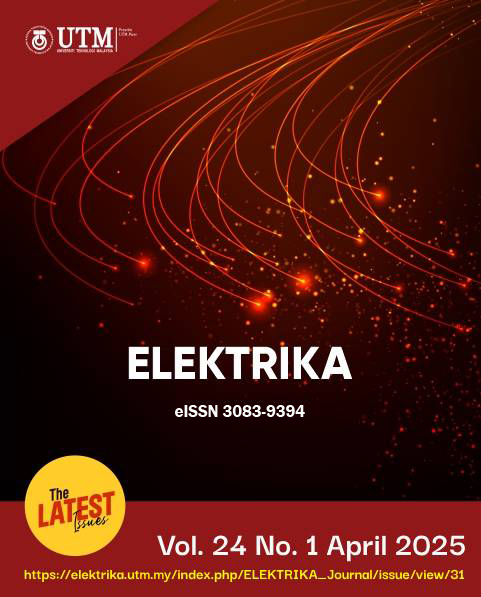An Experimental Investigation of Capacity Performance Evaluation in New and Second Life Lithium-Ion Batteries
DOI:
https://doi.org/10.11113/elektrika.v24n1.625Keywords:
Lithium-ion Battery, New Cells, Second Life Cells, Battery Testing, Capacity Fade, Temperature, State of Health (SOH)Abstract
There is a significant demand for cylindrical cells, particularly those with the 18650 sizes, in the field of power electronics and electric vehicles application. Charge/discharge rates and battery temperature significantly affect cell performance. The effectiveness of different approaches for evaluating the temperature effect is assessed across diverse charge/discharge rate. This study explores the experimental cycle test of lithium-ion cells from a handheld vacuum cleaner utilizing accelerated tests to evaluate their second life. A pair of new lithium-ion batteries (LIBs) and a pair of second life batteries produced by Murata model US186505D were subjected to tests to verify the state of charge. The findings indicated a decline in performance relative to the manufacturer's specified nominal capacity. The state of health (SOH) for new batteries varied from 93.66% to 83.59% of their initial capacity. Second-life batteries maintained a SOH between 66.22% and 75.40% of their original capacity. The relatively elevated values render second-life batteries appropriate for less rigorous applications. An evaluation is undertaken on how well the battery performs under varied C-rate currents and 25°C ambient temperatures. The paper focuses on analysing battery cell performance and identifying as well as validating the variation in battery capacity over battery cycle. All tests were conducted using a battery tester software, BK Precision. These results will greatly aid in estimating second life batteries (SLBs) effectively.
Downloads
Published
How to Cite
Issue
Section
License
Copyright of articles that appear in Elektrika belongs exclusively to Penerbit Universiti Teknologi Malaysia (Penerbit UTM Press). This copyright covers the rights to reproduce the article, including reprints, electronic reproductions, or any other reproductions of similar nature.
















